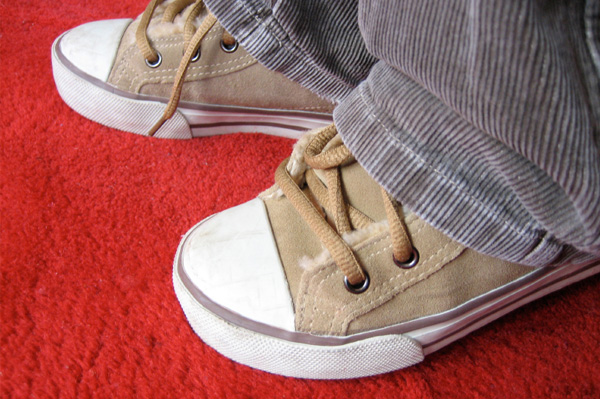 Each day, with every step you take, your big toe bears a tremendous amount of stress, a force equal to about twice your body weight. Most of us don't realize how much we use our big toe. We tend to take it for granted, unless a problem develops.
Each day, with every step you take, your big toe bears a tremendous amount of stress, a force equal to about twice your body weight. Most of us don't realize how much we use our big toe. We tend to take it for granted, unless a problem develops. One problem that afflicts the big toe is called hallux rigidus, a condition where movement of the toe is restricted to varying degrees. This disorder can be very troubling and even disabling, since we use the all-important big toe whenever we walk, stoop down, climb up or even stand. If you have pain and/or stiffness in your big toe, you may have this condition.
Hallux rigidus is a disorder of the joint located at the base of the big toe. It causes pain and stiffness in the big toe and with time it gets increasingly harder to bend the toe. "Hallux" refers to the big toe, while "rigidus" indicates that the toe is rigid and cannot move. Hallux rigidus is actually a form of degenerative arthritis (a wearing out of the cartilage within the joint that occurs in the foot and other parts of the body).
Early signs and symptoms include pain and stiffness in the big toe during use (walking, standing, bending), difficulty with certain activities (running, squatting) and swelling and inflammation around the joint
As the disorder gets more serious, additional symptoms may develop, including pain, even during rest, difficulty wearing shoes because bone spurs (overgrowths) develop and limping, in severe cases
Common causes of hallux rigidus are faulty function (biomechanics) and structural abnormalities of the foot that can lead to osteoarthritis in the big toe joint. This type of arthritis—the kind that results from "wear and tear"—often develops in people who have defects that change the way their foot and big toe functions. In some people, hallux rigidus runs in the family and is a result of inheriting a foot type that is prone to developing this condition. In other cases, it is associated with overuse, especially among people engaged in activities or jobs that increase the stress on the big toe, such as workers who often have to stoop or squat. Hallux rigidus can also result from an injury or an inflammatory diseases, such as rheumatoid arthritis or gout.
Treatment for mild or moderate cases of hallux rigidus may include one or more of these strategies. First, shoe modifications: Shoes that have a large toe box should be worn, because they put less pressure on the toe. Stiff or rocker-bottom soles may also be recommended. Second, orthotic devices: Custom may improve the function of your foot. Third, medications, such as non-steroidal anti-inflammatory drugs (NSAIDs), such as ibuprofen, may be prescribed to help reduce pain and inflammation. Supplements such as glucosamine-chondroitin sulfate and some vitamins and minerals may also be helpful. Fourth, injection therapy into the affected toe can help to reduce the inflammation and pain. Lastly, physical therapy: Ultrasound therapy or other physical therapy modalities may be undertaken to provide temporary relief.
In some cases, surgery is the only way to eliminate or reduce pain. There are several types of surgery that can be undertaken to treat hallux rigidus. These surgical procedures fall into two categories. The first category of procedures consists of reconstructing and "cleaning up" the joint. The arthritic damage from the joint as well as any accompanying bone spurs are removed, preserving and restoring the normal alignment and function of the joint, as well as reducing or eliminating pain. The second category of procedures consists of more aggressive procedures. These procedures include fusing the joint or removing part or all of the joint and replacing it with an implant, such as is done for the hip or knee.
If you or someone you know is suffering from this condition please visit our website, www.drrobertrosenstein.com for more information or contact our office, 440-946-5858 to schedule a consultation.
 The sounds of school bells, slamming locker doors and students clammering into classrooms are being heard once again. With the start of a new school year, parents are eagerly seeking a wide array of school supplies and new fashions for their children. One of the most important purchases on a parent’s back to school shopping list is a new pair of shoes. With the numerous styles and fashions of shoes, several important factors must be considered:
The sounds of school bells, slamming locker doors and students clammering into classrooms are being heard once again. With the start of a new school year, parents are eagerly seeking a wide array of school supplies and new fashions for their children. One of the most important purchases on a parent’s back to school shopping list is a new pair of shoes. With the numerous styles and fashions of shoes, several important factors must be considered:




